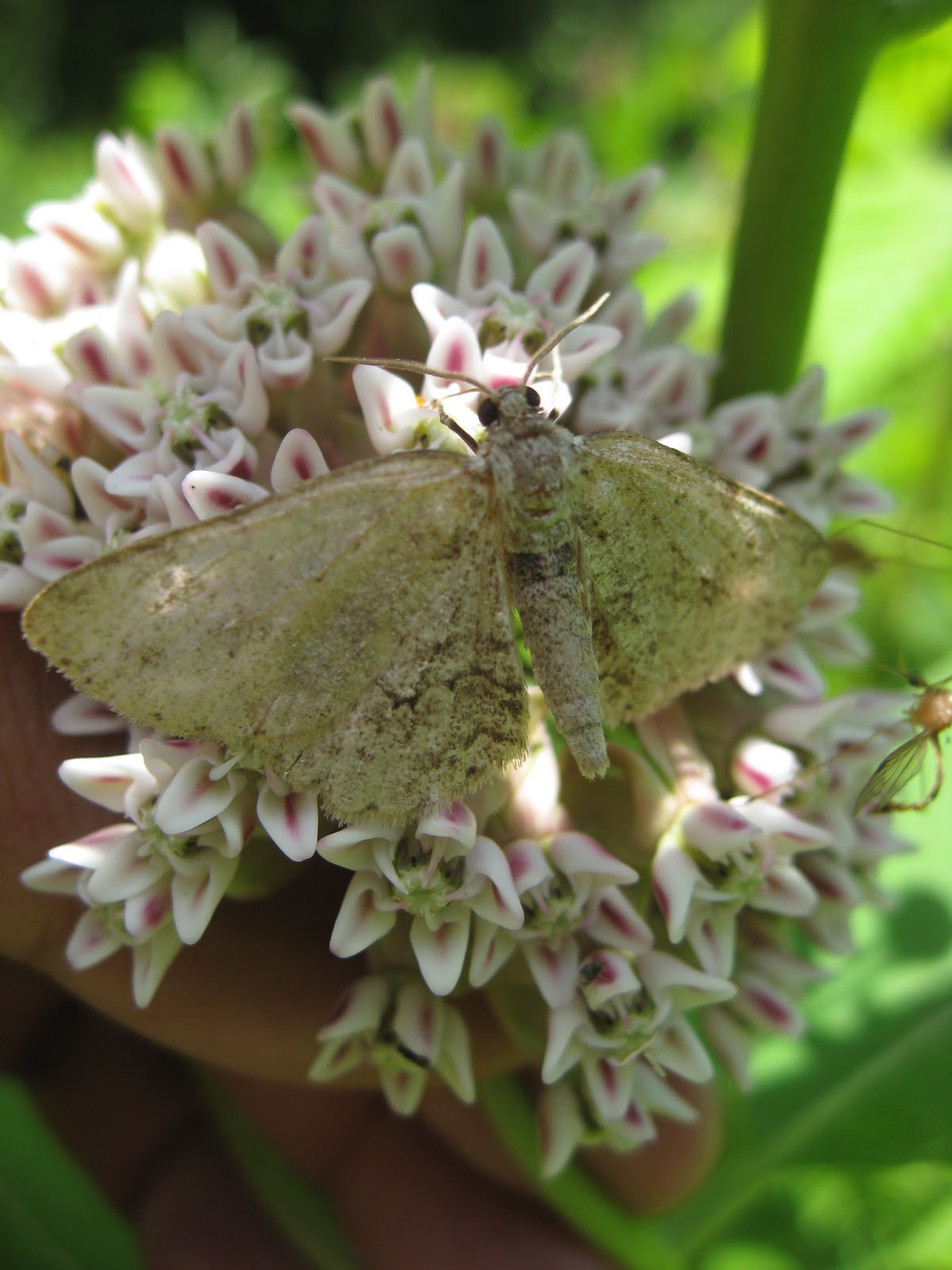 |
| Indian Pipes, Ghost Plants, in bloom. |
Few plants are as eerie or strange as Monotropa uniflora, a native plant with numerous names describing its unusual features. The scientific name translates as "once turning single flower." But they're probably best known as Indian Pipes due to the shape of the flowers, which look like the Native American Indian calumet, or "peace pipe." More names and their sources will become apparent as I describe the plant in more detail.
These perennial plants are members of the Ericaceae or Heath family, but many people think them to be fungi when they first encounter them. They have a waxy appearance (sometimes the are called Wax Plants), very few scaly leaves, and are white or pale due to their lack of chlorophyll. They have no need for chlorophyll because they do not produce their own food through photosynthesis, being some of the 3,000 or so plants that lack this trait.
But Ghost Plants, as they are sometimes called due to their eerie appearance and tendency to grow in the deep shade, are in an even more unusual group of flora, considered epiparasites and referred to as mycoheterotrophs.
These types of plants were once believed to be parasites feeding off the roots of certain trees, but life for them is much more complicated. They actually depend on certain mycorrhizal associations. Many people are not aware that a great many of our native plants have a positive symbiotic relationship with certain mycorrhizal fungi, some cannot even exist without them. These fungi provide certain services and nutrients to plants in exchange for others, a mutually beneficial arrangement for both.
Mycoheterotrophs like Monotropa insert themselves into this arrangement. They steal some of the nutrients the plant was sharing with the fungi. They are mycorrhizal cheaters who steal what they need to survive in a strange menage a trois. They cannot survive without either the plant (certain tree species such as beech) and mycorrhizal fungi, mostly in the Russula and Lactarius genus. They intermingle their roots with the fungi in a tangled mess giving the plants the alternate name of Bird Nests.
Though this solves the problem of obtaining nutrients, it does not solve the problem of pollination. So once a year they need to send flowers up above the soil surface for pollinators to visit (mostly bumblebees). That is when we notice the Ghost Flowers or Fairy Smoke as they are sometimes called.
The blooms straighten and point upwards once they are pollinated, ready to produce seeds. The seeds however need to land somewhere where the specific mycorrhizal fungi and trees are bound together or they will not survive. This makes these plants extremely difficult to propagate and almost impossible to transplant as you break the necessary connections should you attempt to do so.
 |
| Corpse Plants straightening out after pollination. |
The flowers do not last very long if they are picked or even bruised. They appear to decompose rapidly upon being disturbed, melting away and darkening in a gelatinous mess that gives them the alternate names of Ice Plants, Corpse Plants, or Death Plants.
These plants have been used in various fashions by people. The Cherokee sometimes used the pulverized roots to treat convulsions, epilepsy, and fits. Colonists later on used them in similar fashion resulting in their being called Fit Plants or Convulsion Weeds. Colonists also learned to use the plant juice for eye problems as the Cherokee did, giving them the other name of Eyebright. The crushed plant also was applied to warts and bunions.
Other tribes such as the Mohegan believed that this plant could treat colds and fevers. The Cree chewed it for toothaches, the Thompson would treat sores and saw it as a sign that where they were found would be good for foraging mushrooms. Indian Pipes contain glycosides and are considered toxic these days.
Here's a short video on Ghost Pipes:




















